The importance of visiting your makers (repeatedly)
Readers have asked in the past what it’s like developing new clothing, what helps and hinders, what the challenges are. One piece of advice a friend gave me a while ago was to visit the factory more than you think - that even a one-day, flying visit is equivalent to 100 emails.
That’s certainly been borne out by my experience. There are the physical things you pick up on, like the fact there are three more weights of interlining than you realised - just because you never thought to ask. Or you see a new material made up, rather than a swatch, and notice the beautiful way it drapes: suddenly the benefit of that weight is revealed.
But there are subtler ones too. For example, it wasn’t until we’d been at the workshop where we have our shirts made, in Naples, for about two hours that we thought to bring up why communication of shipments makes such a difference.
Most brands work more in seasons than PS. They order products to arrive in July to go on sale in September, with weeks of leeway. And just as importantly, their customers have no idea what products are going to arrive or when.
We’ve tried to bring readers closer to the product - setting out in articles what’s coming up. This makes it more of a problem when a workshop decides not to send the cut lengths of cloth with a shipment of finished shirts, perhaps for a good reason like it puts the shipment over a weight threshold.
It might delay the cloth for a month, until the next shipment, and in the meantime readers that are expecting it in September are wondering what’s going on. Do you send an email to the waiting list, or is that overkill? Do you do a broader announcement, or does that annoy everyone else?
We’d brought this up with Luca Avitabile and the rest of his team before, over Zoom. It had even been discussed when Luca visited London, for his trunk shows. But it wasn’t until we were actually together on the ground, talking to Luca’s assistant and the manager of the workshop, all at the same time, that everyone made themselves understood.
Sometimes it’s about putting yourself in another person’s shoes, to work out why something doesn’t make sense to them. Which in this case was because we’re different to every other retailer.
The workshop shown in these images is the one Luca uses for his production - a small, bright but nondescript building outside the centre of Naples, with around a dozen people working in it.
All the cutting, sampling and basic sewing is done here, plus some handwork. A lot of the finishing, like hand-sewn buttonholes, as in much of the world, is done by workers at home.
It’s the handwork that separates Neapolitan shirts from most of those made in Europe, and why people come here. The buttonholes attract the attention and are easier to communicate, but it’s the functional details like attaching a collar in the round, or easing a larger sleevehead into a smaller armhole, that make the real difference.
Actually, Lucas (who runs the support side of the PS Shop) still gets emails from customers saying there is a mistake with their shirt, because there is a hand-sewn bar tack half way down the front.
This isn’t a mistake - it secures the top of the section of the placket which is machine sewn (for strength) from one which is hand sewn (for movement). He did actually ask me to mention that, so I’m glad I’ve had an excuse to.
One of the things Luca and I did when we visited the workshop, was refine the new Friday Polos that were released recently.
It’s always fun seeing different people try them on and give their feedback. Luca, who’s probably a size smaller than me; Lucas, who is two sizes bigger; and even Jamie, who took these photographs, joined in with the odd jibe from the sidelines.
I’ve found good product design benefits from the clear vision of a single person - about colour, about shape, about style - but also the input of multiple people on cut, sizing and size splits. And indeed data, which Lucas has quite a lot of now.
Our conversation about communication continued into the evening, when we all went out for pizza and beer (always what I have a hunger for in Naples). How can we make life easier for Anthony (who runs our warehouse); how that can avoid the occasional mistake; what feedback we get from readers, which we wouldn’t think to share on a time-boxed Zoom call.
It was very productive, though cut short by the fact Napoli were playing on the TV, and winning. (The local football team - or ‘soccer’ team to our American friends.)
The conversation became increasingly broken up as goals were scored or chances went begging. People moved from the edges of the restaurant to get closer to the TV, hung high in a corner. Jamie, who had the misfortune to be sitting with a column between him and the game, shifted round.
Napoli won, there was much cheering and air punching, and then an almost eerie lull. Everyone except us knew what was coming. Suddenly the restaurant was flooded with noise as cars roared back from the game, fans screaming from the open windows, horns honking.
I love Naples.


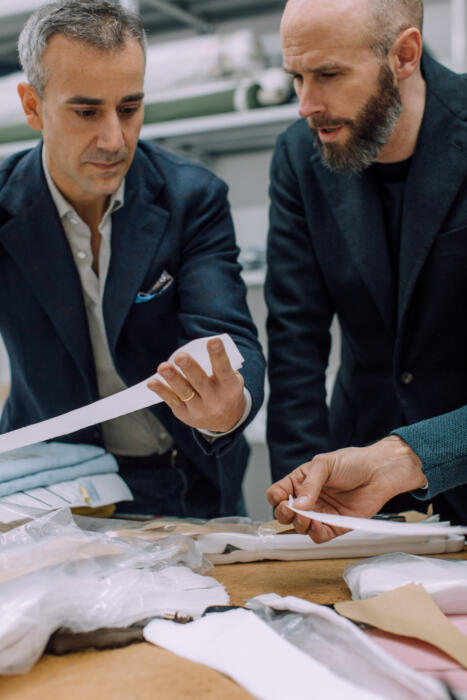
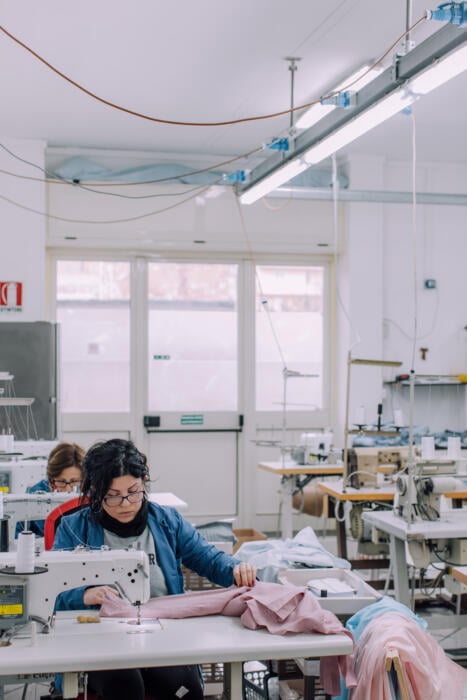
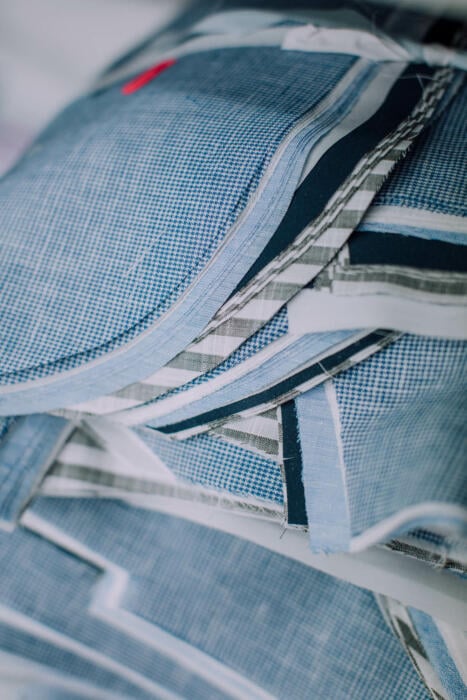
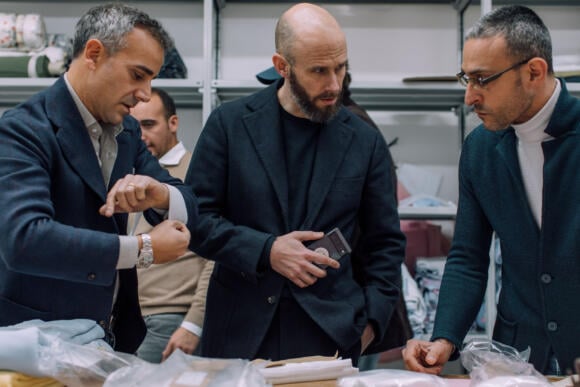
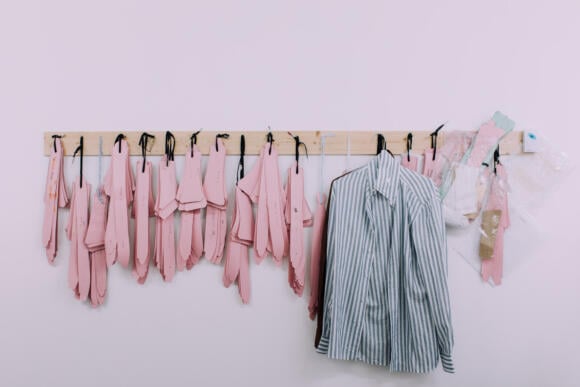
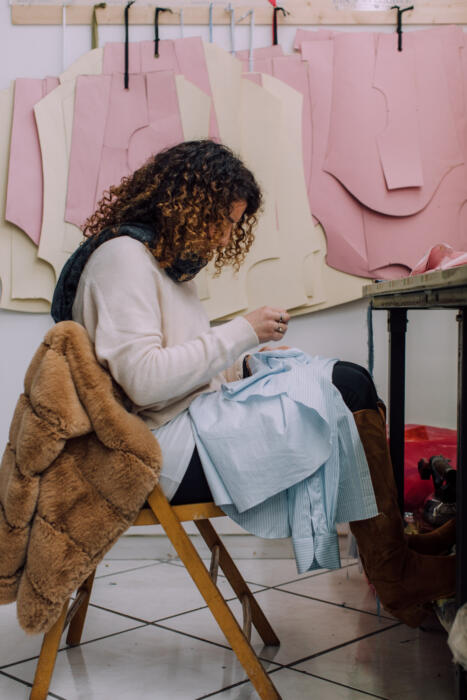
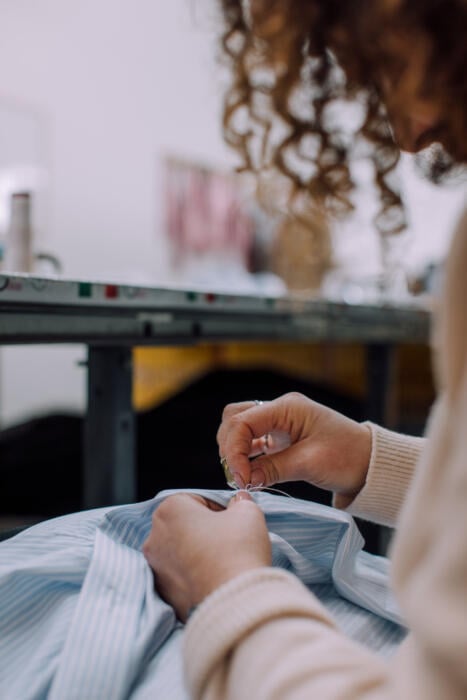
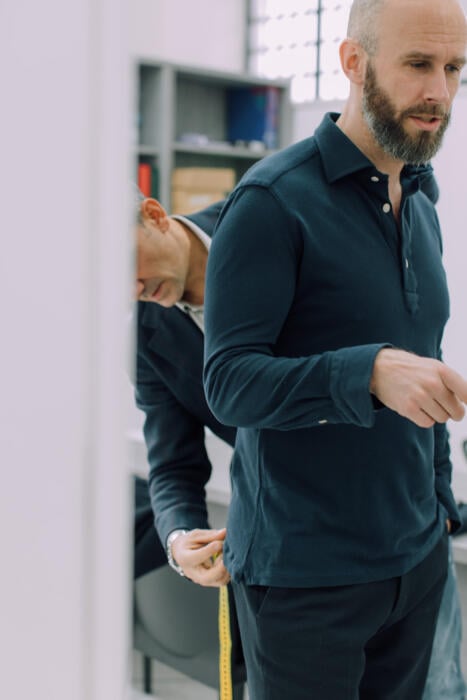
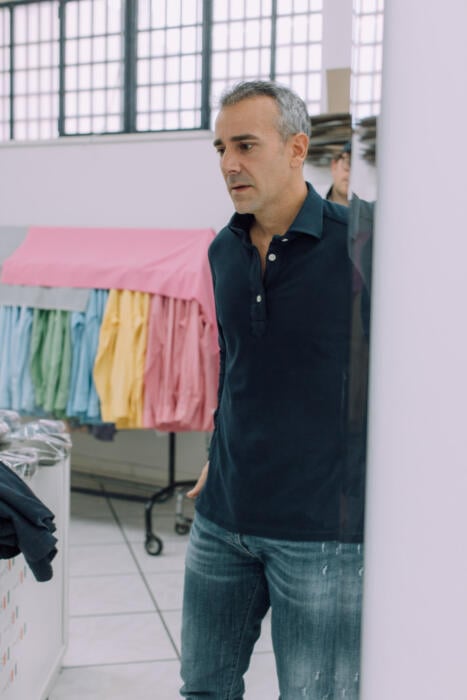
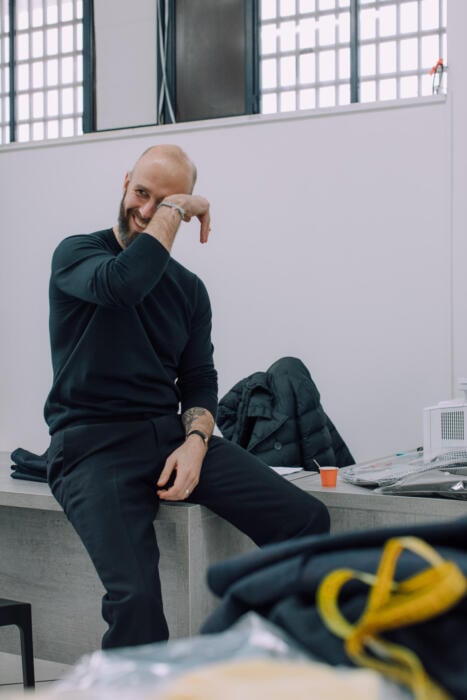
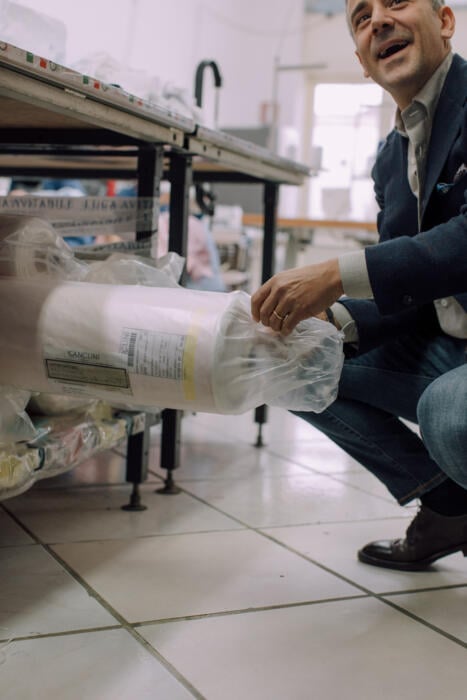
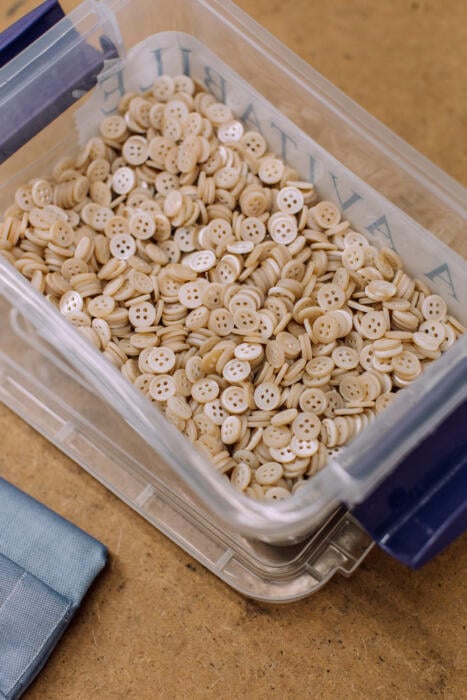
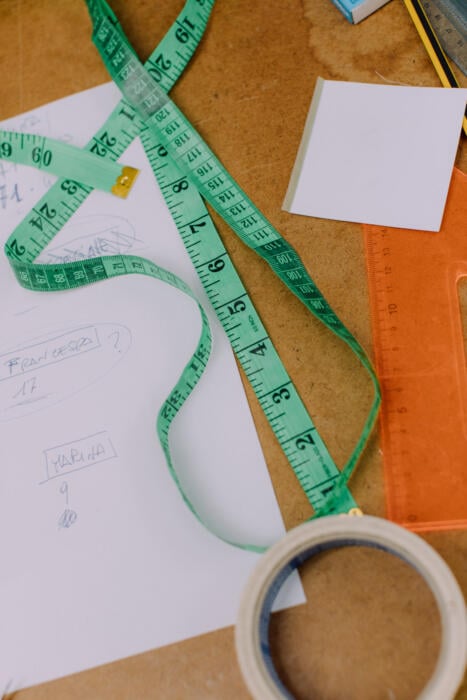


























The PS Oxford shirts are pretty perfect. Have the big old 1960s Brooks Brothers collar. Beautiful material and subtle, vintage shades. High arm holes like a bespoke jacket. Lovely hand finishing. (Only change I’d like is for the XL to be just a tad bigger).
Thanks and noted, cheers Richard
I’d throw my hat into the ring to support,Simon. Beautiful shirts, but a little narrow(tight is not the correct description) across the shoulders. It certainly would not prevent me purchasing more.
Please avoid any temptation to ‘improve’ the collar roll.
Thanks Peter, will do
Agree on the PS Oxford sizing. I am relatively trim wearing a 38R jacket and find the mediums I have bought restrictive in the shoulders, arm holes and body. The addition of a box pleat might help. My Brooks shirts measure only one inch larger across the shoulder however the box pleat allows more freedom of movement. The arm hole on the Brooks is larger by a couple inches with a similar sleeve taper. Few PS readers would want the potato sack Brooks silhouette but there should be a middle ground. Otherwise love the fabric and the roll collar which are spot on.
Thank you Robert, noted
One voice for the other side:
The medium fits my shoulders perfectly, but I have a local tailor put in pleats to avoid it being overly blousy. I’m also normally a 36R. Looking at all these opinions, definitely reminds me not to envy those making the actual decisions on sizing and cut for manufacturers!
Cheers Riccardo, yes you can’t really ever please/fit the majority of people
Careful Simon.
Fourth photo down – you flanked by the two gentleman. You’re sending out a very Vladamir Putin-esque vibe!
Oh dear!
“This makes it more of a problem when a workshop decides not to send the cut lengths of cloth with a shipment of finished shirts, perhaps for a good reason like it puts the shipment over a weight threshold. It might delay the cloth for a month, until the next shipment, and in the meantime readers that are expecting it in September are wondering what’s going on.”
This is an astonishing statement. PS’s customers should not be made to wait because the workshop suddenly decides to save a bit of money. The workshop should be required contractually to deliver the cuts of cloth on time with the finished shirts. The associated shipping costs should be reflected in the contract price.
Hi Kent,
It’s not about the workshop saving money – any extra they spend is passed along into the cost of the garments to PS, and then along into the price of the garments for the customer. You could send shipments every day, and indeed send expedited delivery, but the shipping cost associated with the product (already higher in the past few years) would go up by multiples.
Finding the right balance there is about the communication I mentioned. The workshop will always tend towards saving for money for its customer, and may not realise that a week or two makes a big difference (it wouldn’t as much with bigger, more seasonal brands). So one thing you can build into agreements or contracts is a policy there. But it’s the kind of boring stuff most people don’t think of when they think about starting a brand!
S
Very evocative post, both as I have had the chance to visit a shirt factory a couple of times (near Bergamo) and as a football fan.
Good advice too, the only downside is the cost associated with a site visit, but mine were very memorable and enjoyable.
Menswear is definitely a people business, even though so much has moved online.
Very true Matthew. And site visits always seem expensive, but are nearly always worth it in the long run – such as the communication points discussed here
The tonal look you’re wearing here is very nice, Simon.
Thank you JB – it was covered to an extent in this previous article
Hi Simon, this is an excellent article. Thank you. A suggestion for a future article, perhaps by Jamie: insights into fashion photography. His photos always accentuate the articles brilliantly. How does he capture these moments, how does he take advantage of lighting (when natural light might be poor), what cameras and lenses he uses.
As a hobby photographer, I think a write-up about how he takes take un-staged (at least in the sense that it’s not posed studio) style and product photos would be interesting, but I don’t know if it’s really relevant for most PS readers?
But please, no gear discussion! There is nothing more boring than hearing people talk about their gear – modern pro and semi-pro cameras are so good that short of very edge cases (extremely long tele lenses for action photography, or complex studio setups with multiple flashes) any up-to-date system works well, and the difference is far more towards the photographers approach than which piece of glass they use or if it says Canon or Sony on the camera.
Hi, Simon,
Your description and explanation of why it is so important to be on the ground can not be over egged.
This is a universal management issue and so often missed by those who come from a command structure.
As you said, you need to walk in their shoes. In doing so, you learn so much. What is important to them might not be important to you and vice versa. Understanding each others constraints, what is difficult what is easy, what is thought to be prohibitively expensive or of no consequence to one party which is seen as an opportunity or unique selling point to the other.
This can not be done by emails, Zoom calls or text.
An old term was management by walking about, to really see what is going on.
But that undirected, non-specific time to understand is where great opportunities lie, and an even greater by-product is the relationships that are built by simply being there person to person cannot be replicated any other way,
Sitting down an eating allows us to talk around subjects rather than directed, time limited utilitarian meetings, messages that specifically avoid talking around a subject.
Good food leads to great relationships.
It’s good to see you grow a closer relationship with makers. I understand perfectly the value of ‘being in the flesh’ in comparison with back and forth emails.
I’d like to see more makers explore more options for bespoke and MTM or customising of sizing in clothes, particularly more casual clothing/RTW lines. We are where we are with the decline in suiting, but the customisation (and good service) in the bespoke niche should be adopted outside of this area rather than see it become even more or a rare thing.
Were I to develop a piece or line of clothing, one of the first questions I’d be asking myself and the makers is, “how can we make this piece fit ALL of our customers, like it was made especially for each individual one?”
After all, ‘fit’ is one of the top criteria recommended to customers when choosing a garment.
I think more communication is better – it is more time consuming, it can make work ‘harder’, but ultimately it leads to better understanding and deeper appreciation from all sides and greater satisfaction in the longer run.
Hi Simon, great article and, yes, there so much to like about Naples. I have read the following sentence five times (once for every PS shirt I own) but I don’t understand it: “This isn’t a mistake – it secures the top of the section of the placket which is machine sewn (for strength) from one which is hand sewn (for movement).” What does securing from mean? Do you mean it is fixed in between as a barrier so the top half stichting doesn’t rip because the bottom half moves more?
Yes exactly Jan. To keep those two separate and secure. Sorry that wasn’t well put
Interesting, thank Simon
Great article Simon.
Just as a slight aside, I’ve got three of the PS Tapered T in White but at least one of them is definitely more Ecru. This is fine by me but I expect is an example of, as you indicate, the importance of getting hands-on with the product; images just won’t suffice.
Thanks CJ, and yes it is. There’s always a little bit of variation between colours – whether it’s Scottish knits, Japanese tees or Italian shorts – but we try to keep it as consistent as possible. Most of the time it’s an issue with the yarn supplier rather than the maker
What a lovely article, Simon! Just a question of curiosity and apologies if you’ve covered this elsewhere, but do you know why finishing tends to be done at home?
Generally it’s because it’s an activity that doesn’t require interaction with others (unlike pattern making, perhaps) and tends to be done by one, more specialised person.
Historically fine work like that is also more commonly done by women, who have other responsibilities at home and welcome the ability to be able to do this work in between other things.
It’s still the same in the UK with many things, including crafts like hand-rolling, finishing on gowns or pyjamas (piping etc), embroidery and so on
Love the Padre Pio and Mary and Jesus cards — as well as the rest of the post.